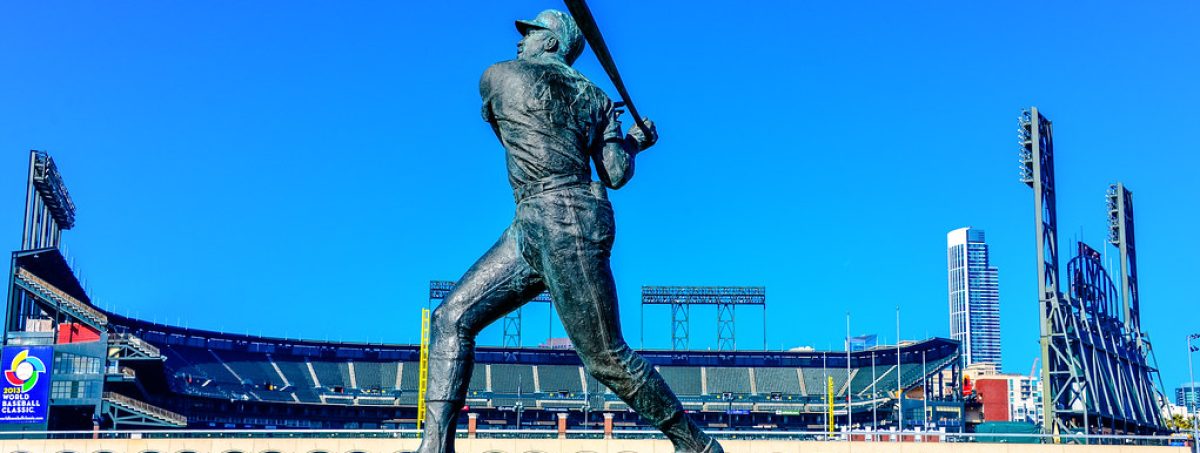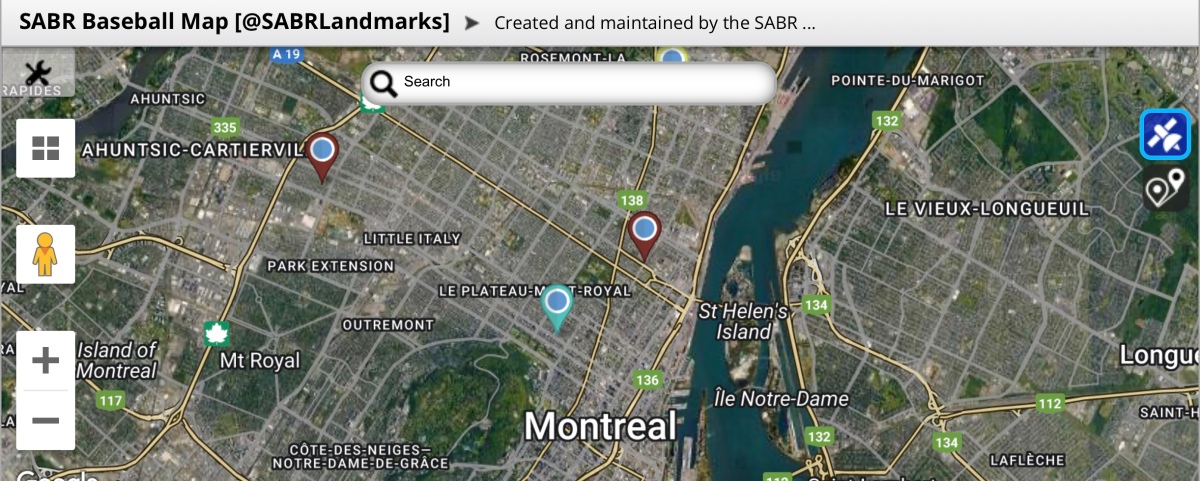I was fortunate enough to spend the start of July in one of the world’s great cities, Montreal, home to the Expos from 1969 to 2004. Of course the baseball history (and baseball card history!) of Montreal stretches back much further than that.
The Montreal Royals joined the International League in 1897 and went on to win seven league titles, all between 1941 and 1958. A Montreal Royal, James “Doc” Casey, is even represented in the 1909-11 American Tobacco Company “White Borders” (T206) set affectionately dubbed “The Monster.”

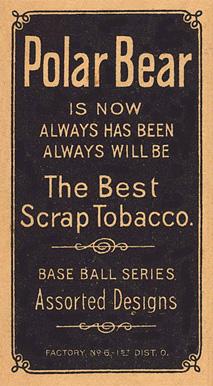
Of course, the most famous Royal of them all played for the 1946 Montreal squad, recognized as one of the top 100 minor league teams of all-time. A pleasant half hour walk through some fun and artsy neighborhoods brought me to his colorful mural at 3907 St. Laurent Blvd.

From there, I had two choices. Walk back to my hotel or walk another 30-40 minutes to hit another Jackie Robinson landmark. I chose the latter.
The Montreal Royals of Jackie’s time played their games at Stade De Lorimier (pronounced duh-lor-eem-yay). The ballpark is long gone, but the city has commemorated the “place of the Royals” with a…dingy metal sign?!
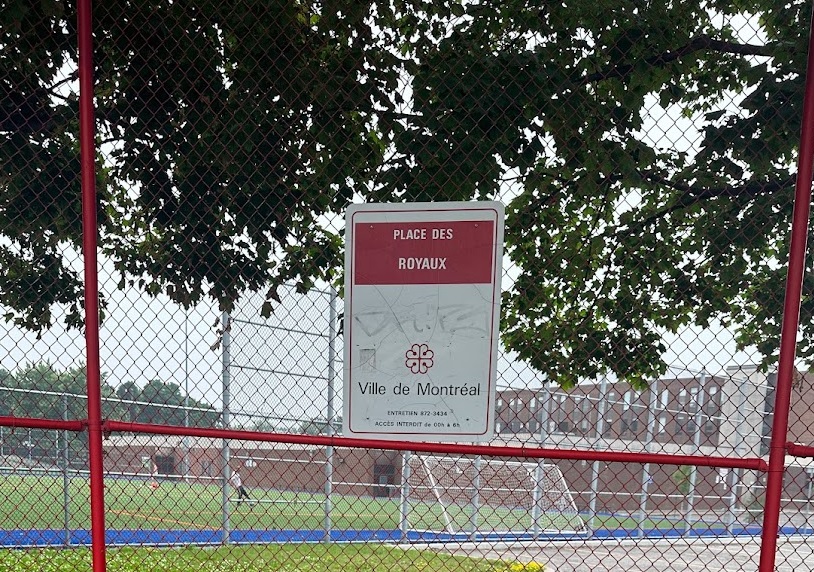
Okay, so that’s only half true. Yes, the marker could use an upgrade, but there is also an excellent tribute to Jackie Robinson just below it.
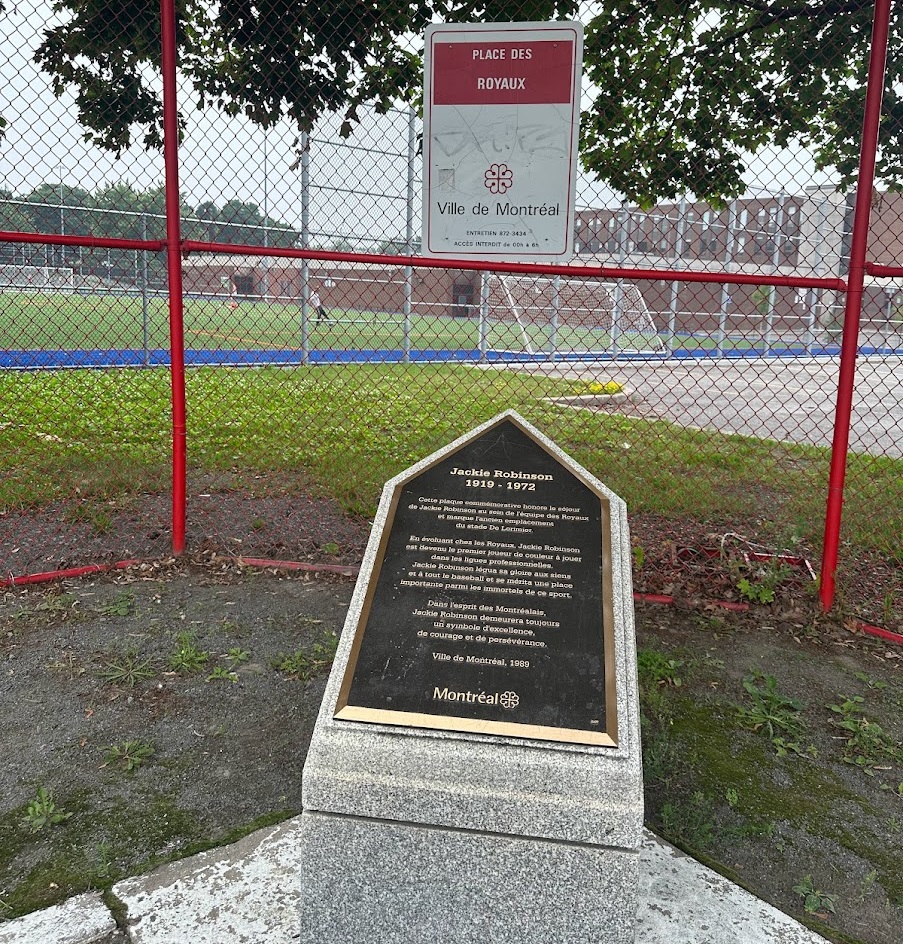
Loosely translated to English, the words on the sign read—
This commemorative plaque honors Jackie Robinson’s stay with the Royal team and marks the former location of De Lorimier Stadium.
By playing with the Royals, Jackie Robinson became the first player of color to play in professional leagues.
Jackie Robinson bequeathed his glory to his family and all baseball and earned an important place among the immortals of this sport.
In the minds of Montrealers, Jackie Robinson will always remain a symbol of excellence, courage and perseverance
City of Montreal, 1989
You may have noticed the plaque takes the form of home plate, and this is no coincidence. In fact, it is part of a larger mini-ballpark, complete with outfield grass and bleachers.

Though there were other landmarks I might have made by foot, I already had plans to tour them the next day with Montreal baseball artist Josée Tellier, whose wonderful Jackie Robinson artwork adorns the entrance to our guest room.
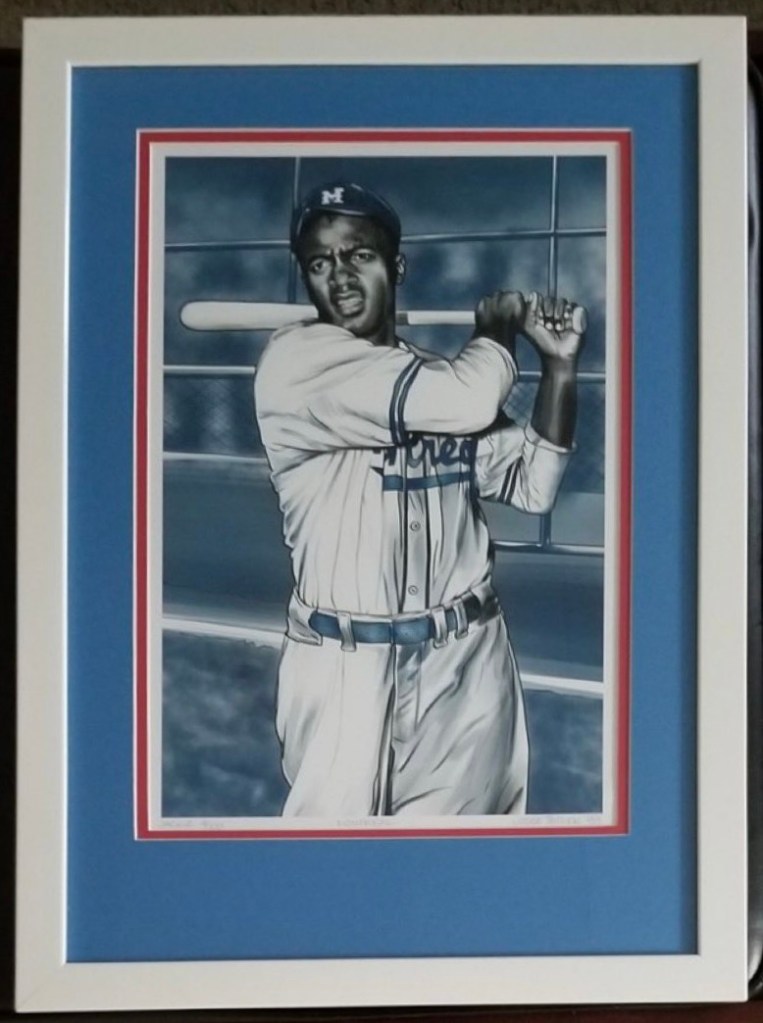
As this second day of landmarks was more distant from my hotel, we caught a cab to their general vicinity before setting out on foot. Our first stop was Jackie’s second mural in Montreal. If you look closely you’ll notice one of the locals totally not thinking what I’m doing is super dorky.
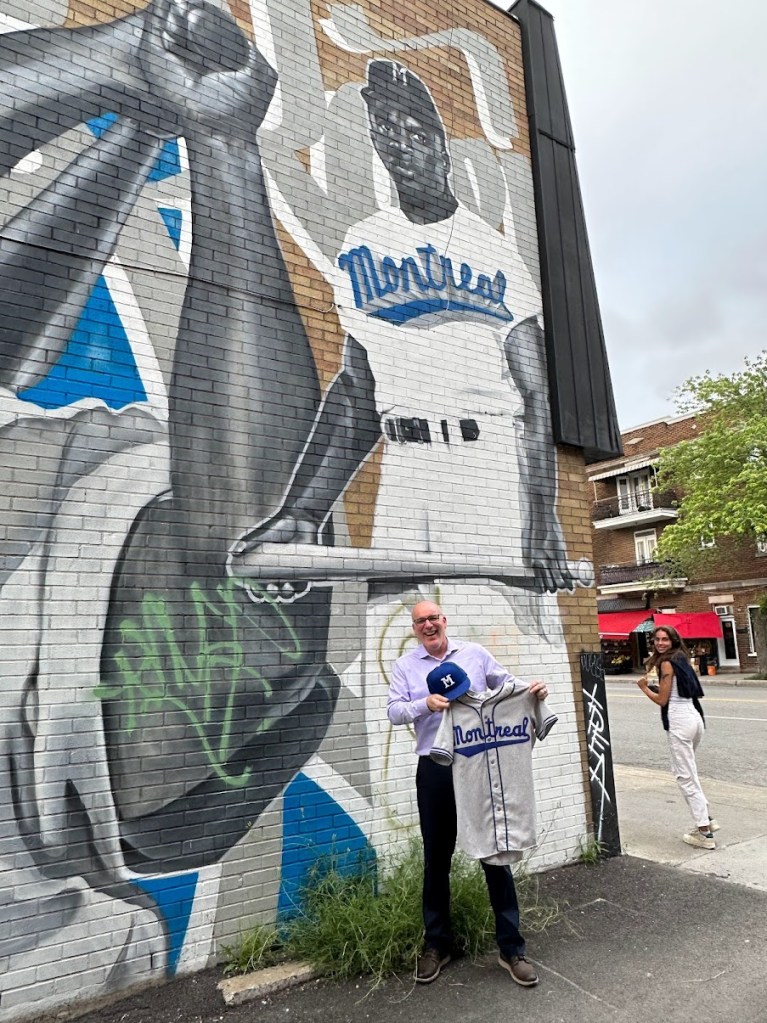
We were definitely in Mr. Robinson’s neighborhood now, or more correctly Mr. and Mrs. Robinson’s neighborhood. As proof, here is the house just a few blocks away that Jackie and Rachel called home in 1946.

Here is a closer look at the plaque by the door. (Note the bottom half presents the English translation.)
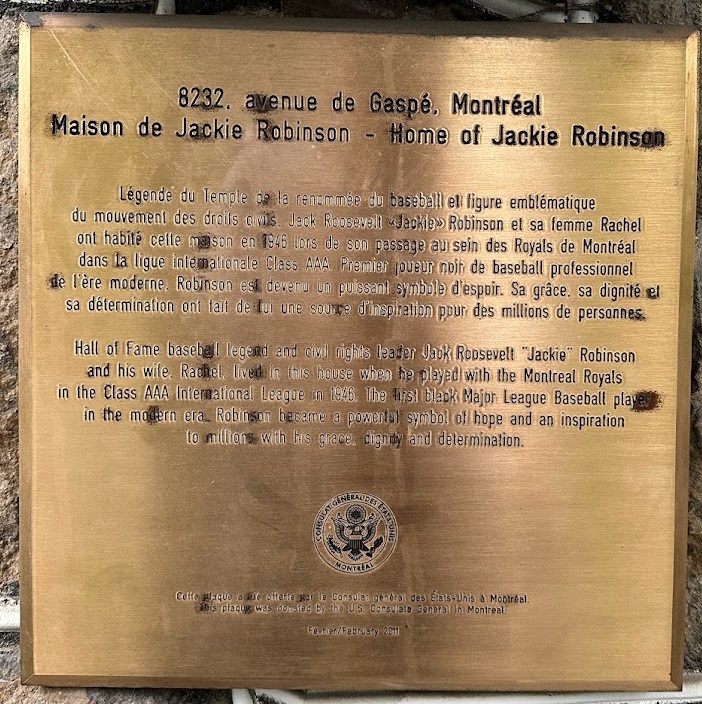
Our final landmark for the evening was nearby Jarry Park, home of the Montreal Expos from 1969-76. A small portion of the original stadium structure still remains as part of a newer tennis facility.
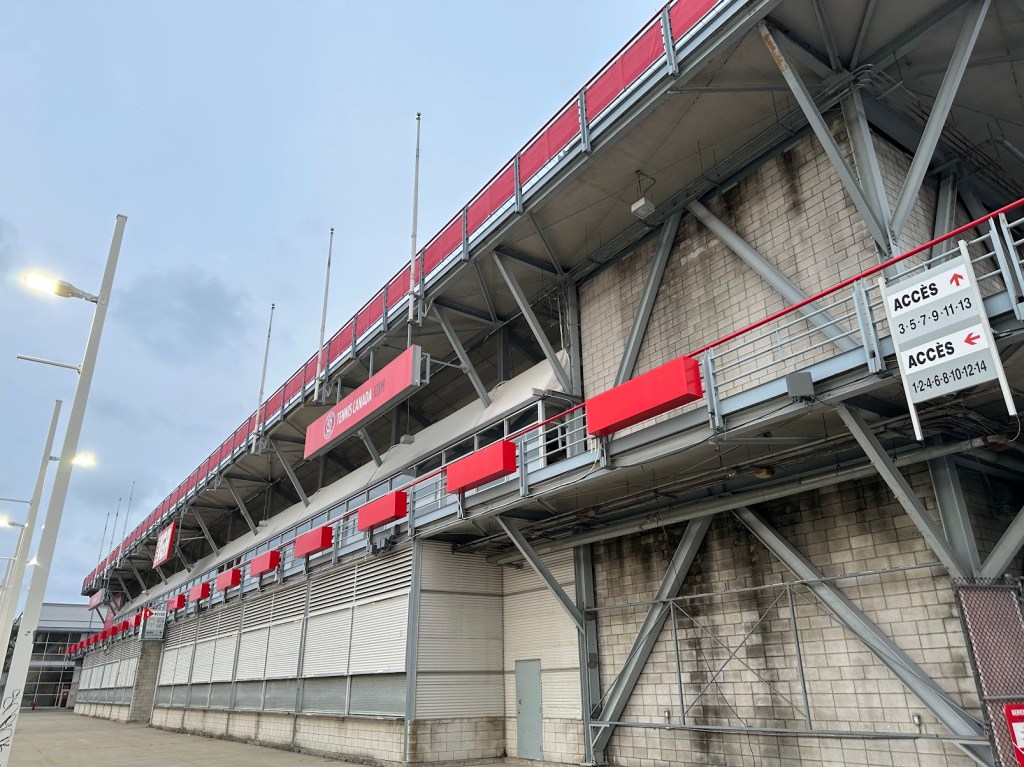
The street name equally serves to remind visitors that a beloved major league team once played here.
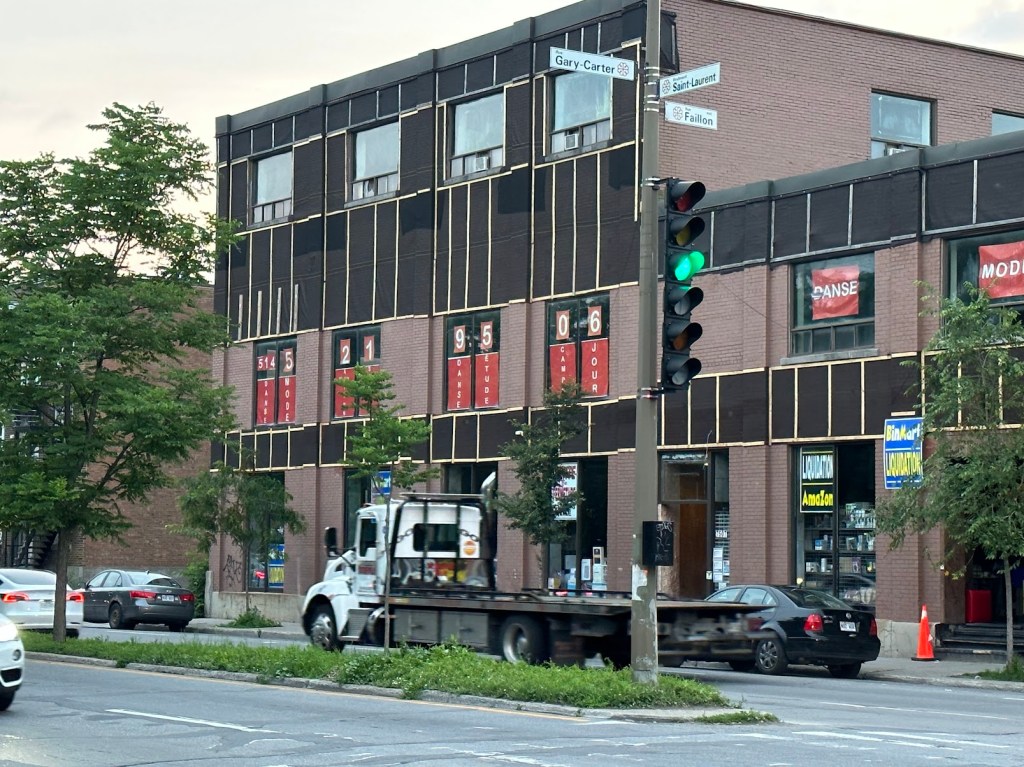
As we wrapped up this round of landmarks, Josée made sure I knew there was one more Jackie Robinson landmark we didn’t cover because it was too far away: the Jackie statue at Olympic Stadium. Lucky for readers of the Hardball Voyager, I got up the next day at 5 AM and decided a 7-mile walk wouldn’t be completely insane.
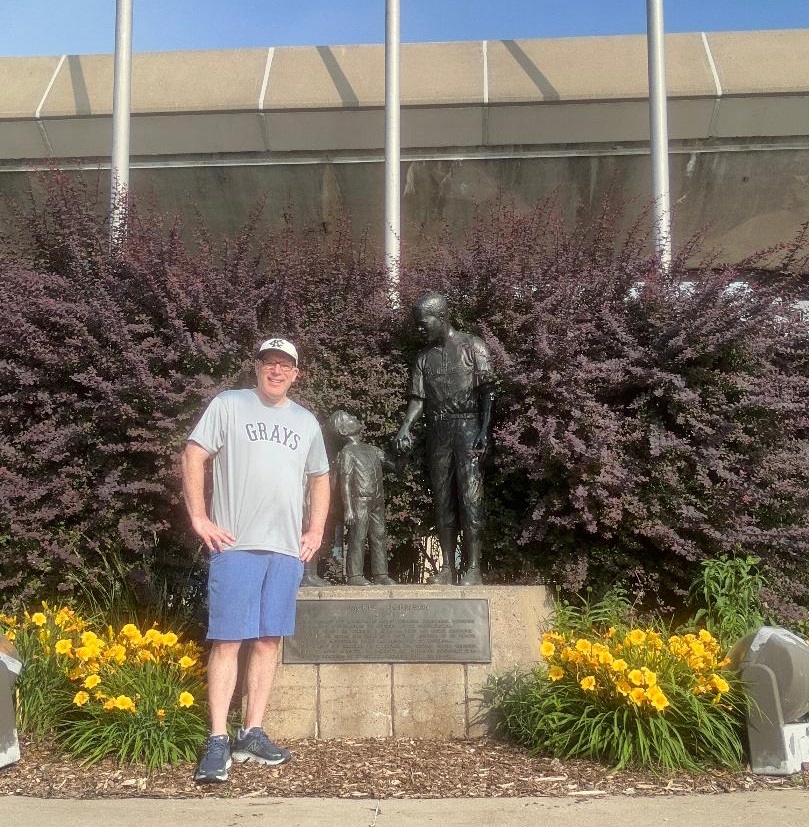
Here is a view of the statue without some guy blocking it.
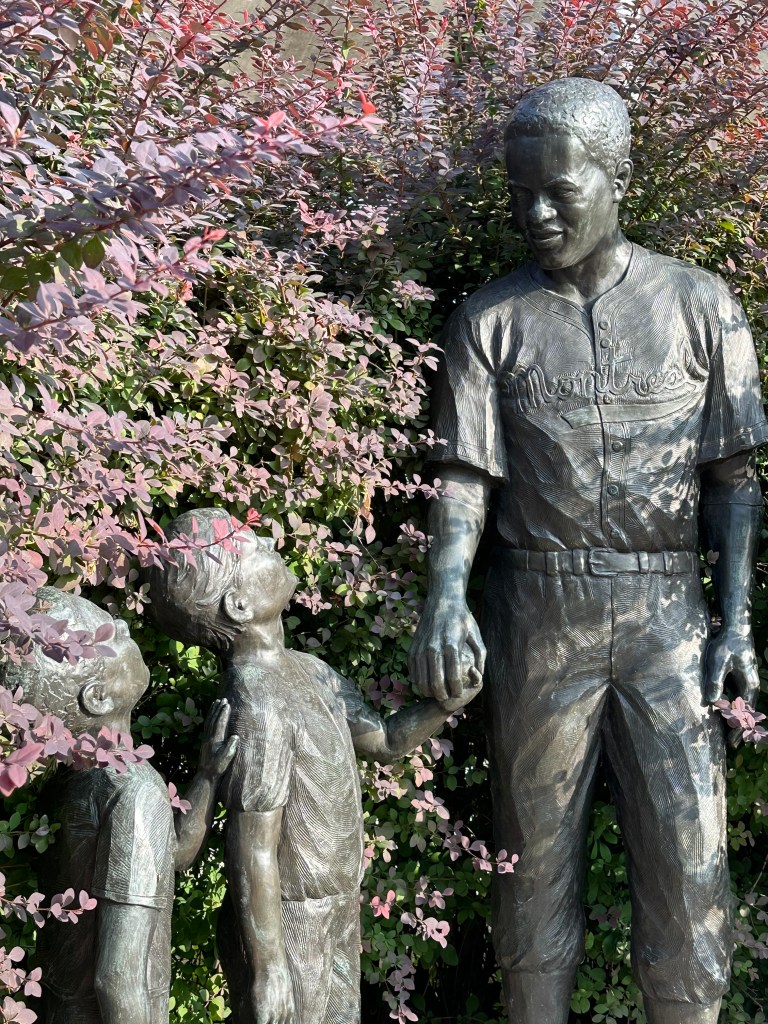
And here is a close-up of the plaque.
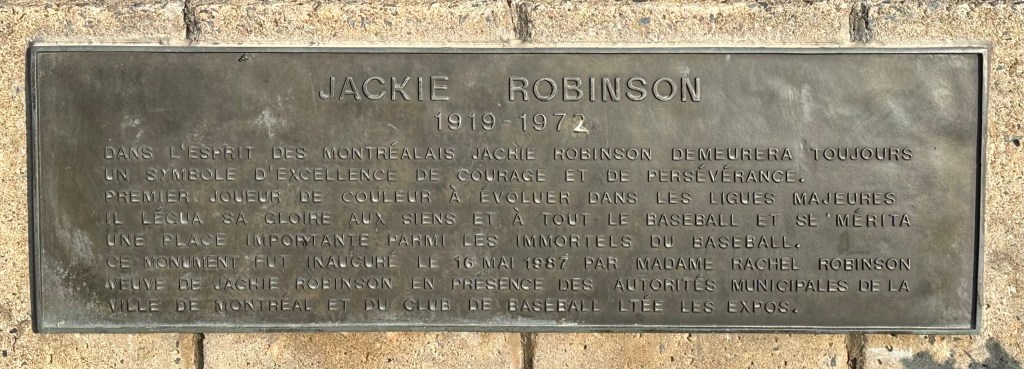
Finally, here is the statue from further away. Olympic Stadium is the giant flying saucer-looking thing behind it.

Olympic Stadium was of course home to the Expos from 1977 until 2004, after which MLB relocated the team to Washington, DC. (Boo! Bud stole the Expos!) Amid all today’s talk of expansion and relocation, there are high hopes in Las Vegas, Nashville, Salt Lake City, and Portland but only the dimmest of forecasts for a return to Montreal.
Still, right in front of this stadium without a team stands Jackie—in what now may be recast as an act of defiance—handing the ball to the next generation, refusing to let the game die. I guess time will tell, at least here in Montreal.


